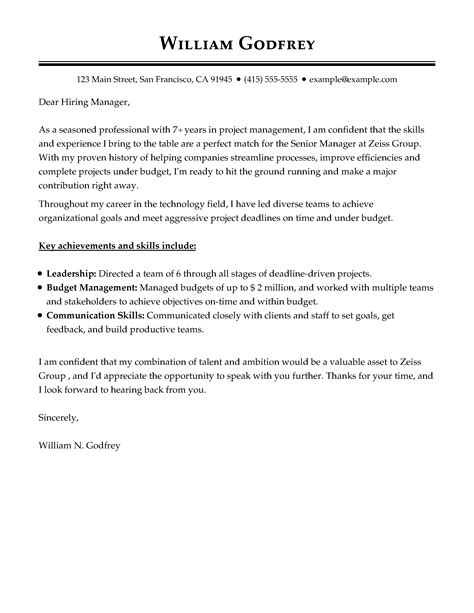Perfecting Cover Letter Format: Examples & Tips

As a job seeker, crafting a perfect cover letter is crucial in getting the attention of hiring managers. A well-written cover letter can make or break your chance of getting an interview. In this post, we will share tips and examples to help you perfect your cover letter format and increase your chances of landing your dream job.
1. Understand the Purpose of a Cover Letter
A cover letter serves as an introduction to your resume and provides a more personalized touch to your job application. Its primary purpose is to convince the hiring manager that you are the best candidate for the job.
2. Address the Hiring Manager
Addressing your cover letter to the hiring manager shows that you have done your research and are genuinely interested in the position. Avoid using generic greetings such as “To Whom It May Concern” or “Dear Sir/Madam”. Instead, use the hiring manager’s name and title if possible.
3. Customize Your Cover Letter
Avoid using a generic cover letter for all job applications. Customize each cover letter to match the job requirements and company culture. Highlight your relevant skills and experiences that are aligned with the job description.
4. Use a Professional Format
Your cover letter should have a professional format and be easy to read. Use a standard font and size, and keep the letter to one page. Use proper formatting with a clear structure, including an introduction, body, and conclusion.
5. Start with a Strong Introduction
Your opening sentence should be attention-grabbing and make the hiring manager want to read more. Start with a strong hook that highlights your accomplishments or qualifications. Use specific examples to demonstrate how you can add value to the company.
6. Highlight Your Relevant Skills and Experiences
In the body of your cover letter, highlight your relevant skills and experiences that are aligned with the job requirements. Use specific examples to demonstrate how you can add value to the company. Avoid repeating your resume but instead, expand on your experiences and achievements.
7. Show Your Passion for the Job
Show your enthusiasm for the job and the company. Explain why you are interested in the position and what motivates you to apply. Share your passion and how you can contribute to the company’s goals and mission.
8. End with a Strong Conclusion
End your cover letter with a strong conclusion that summarizes your main points and reiterates why you are the best candidate for the job. Thank the hiring manager for their time and express your enthusiasm for the opportunity to interview.
9. Proofread and Edit Your Cover Letter
Before submitting your cover letter, proofread and edit it for grammar and spelling errors. Use a tool such as Grammarly to catch any mistakes. Ask a friend or mentor to review your letter and provide feedback.
10. Follow Up After Submitting Your Cover Letter
After submitting your cover letter, follow up with the hiring manager to show your interest in the job. Send a thank-you email and ask if they need any further information from you. This shows that you are proactive and interested in the position.
Conclusion
A well-written cover letter can make a significant impact on your job application. By following these tips and examples, you can perfect your cover letter format and increase your chances of landing your dream job. Remember to customize your letter, show your passion, and proofread before submitting.
FAQs
What is the purpose of a cover letter?
A cover letter serves as an introduction to your resume and provides a more personalized touch to your job application. Its primary purpose is to convince the hiring manager that you are the best candidate for the job.
What should I include in my cover letter?
You should include a strong introduction, relevant skills and experiences, your passion for the job, and a strong conclusion. Customize each cover letter to match the job requirements and company culture.
How should I format my cover letter?
Your cover letter should have a professional format and be easy to read. Use a standard font and size, and keep the letter to one page. Use proper formatting with a clear structure, including an introduction, body, and conclusion.
Should I follow up after submitting my cover letter?
It would be best to follow up after submitting your cover letter to show your interest in the job. Send a thank-you email and ask if they need any further information from you. This shows that you are proactive and interested in the position.
